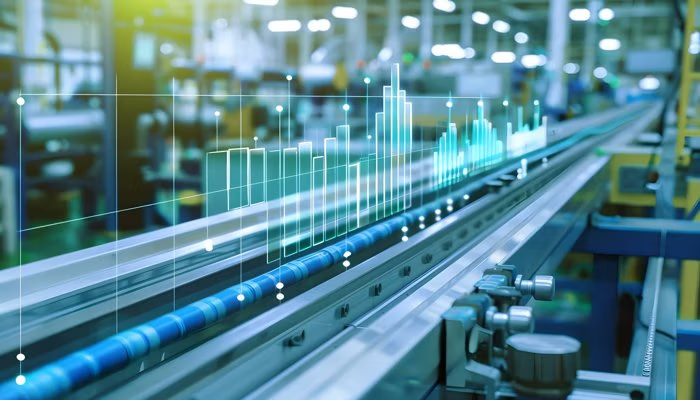Summary: In manufacturing, the assembly line, also called the production line, has completely transformed how products are made. Tracing its roots back to the Venetian Arsenal years ago, the production workflow has become an element of modern production systems. The automotive sector serves as an illustration of this manufacturing system employing parts to streamline assembly operations. This assembly method ensures production rates and promotes cost efficiency and enhanced productivity.
Historical Background of Assembly Lines
Throughout history, influential figures like Henry Ford pioneered the production workflow concept, revolutionizing manufacturing practices and society at large. Today, production workflow integrate cutting-edge machinery and technologies that gather data from workers and machines, enhancing line efficiency and productivity optimization.
Origins of Assembly Techniques
Assembly as a method in manufacturing has been around for centuries; however, during the revolution, the concept of an production workflow began to take form. The idea gained momentum in the 20th century due to groundbreaking contributions by visionaries such as Henry Ford. Henry Ford and his Ford Motor Company (Fords Highland Park Factory) played a role in advancing production workflow techniques. Ford’s idea was to break down the production process into tasks, allowing workers to focus on tasks repeatedly. This division of labor led to improvements in productivity and efficiency.
The Concept of Moving Assembly Line
Ford’s strategy included a moving assembly line, where the manufactured item moves along a conveyor or series of workstations. As the item moves along the line, various components and parts are added in a predetermined order until the final product is completed.
Advantages and Influence
The introduction of production workflows brought about a change in the manufacturing sector. Production workflows facilitated mass production by simplifying the production process and reducing manufacturing time. Consequently, this led to efficiency, decreased labor costs, and made products more accessible to consumers. It continues to be an element in manufacturing, propelling progress and influencing the development of tomorrow’s products.
What ensures reliability and efficiency in maintenance?
The right software streamlines workflows and enhances asset performance!
Modern Assembly Lines
Today’s manufacturing realm has witnessed progress in assembly lines. Modern production workflow heavily rely on automation, leveraging robotics, software, and data-capturing devices to streamline production processes. These lines specialize in executing tasks with accuracy and speed. Traditional production workflows have long played a fundamental role in manufacturing industries. In these setups, workers station themselves along a conveyor belt or line as the product travels between workstations. Components are sequentially added until the final product is completed. This method has prevailed across sectors like automotive, electronics, and appliances.
Automated Assembly Lines
With enhancements shaping production workflow into more efficient and adaptable systems. These updated lines feature automated procedures where machines and robotics play roles.
Modern production workflow rely on robotics and sophisticated software to efficiently handle products such as automobiles with precision and speed.
Flow Assembly Lines
A rising trend in production workflow operations is the adoption of flow production workflow, prioritizing flow and minimal interruptions. In this setup, the product moves continuously along the line while workers carry out tasks at designated workstations. This approach helps prevent bottlenecks and ensures a production process.
The Evolution of Assembly Lines
The production workflow is one of the most transformative innovations in manufacturing history, revolutionizing production processes and shaping the modern industrial landscape. Several key milestones mark its evolution:
Automation and Robotics
Automation and robotics are expected to take on a role in the evolution of production workflow. By incorporating robotics, machines along production workflow can execute tasks accurately and efficiently, reducing reliance on labor. This shift towards automation is likely to progress, leading to automated production workflow that require minimal human involvement.
Utilizing Data for Manufacturing
The integration of data collection and analysis has become essential for manufacturing systems. Production workflow now collect data from operators and machines, offering insights into the production process. Leveraging this data-driven approach enables manufacturers to enhance efficiency, pinpoint bottlenecks, and make informed decisions to boost productivity. Additionally, predictive maintenance powered by industrial maintenance technologies helps prevent equipment failures, reducing downtime and ensuring a seamless production flow.
Adapting to Changing Needs
Future production workflow must adjust in response to growing demands for customization and flexibility. Customers nowadays look for products with features and choices, making it essential for production lines to adapt quickly and be versatile enough to accommodate these options. Companies must balance producing items in quantities and providing customization to address their customers’ changing preferences.
FAQ | Assembly Line
What is an assembly line?
An assembly line is a streamlined manufacturing process in which a product moves sequentially through specialized workstations, with each station performing a designated task. This method enhances efficiency, reduces production time, and enables mass production by dividing labor into repeatable, optimized steps.
How did the assembly line revolutionize manufacturing?
It revolutionized manufacturing by significantly increasing efficiency, reducing production costs, and enabling large-scale mass production. By streamlining tasks and minimizing manual handling, it accelerated output while maintaining consistent quality. This innovation not only made goods more affordable for consumers but also reshaped global industry by setting new standards for productivity, scalability, and factory maintenance, ensuring smooth operations and prolonged equipment lifespan.
What was Henry Ford's contribution to the assembly line?
Henry Ford and his Ford Motor Company pioneered the implementation of assembly line methods, introducing the moving assembly line concept and dividing the production process into sequential tasks.
How have assembly lines impacted society?
Assembly lines have reshaped society by driving economic growth, creating millions of jobs, and making consumer goods more affordable and widely available. They have improved living standards by increasing wages in industrial sectors and fostering technological advancements. Additionally, by enabling mass production, assembly lines have influenced global trade, urbanization, and the development of modern economies.
How do assembly lines adapt to sustainability regulations?
Modern assembly lines incorporate energy-efficient technologies, waste reduction strategies, and eco-friendly materials to comply with sustainability regulations. Automation optimizes resource use, while AI-driven monitoring helps minimize emissions and improve overall environmental impact.
What is the future of assembly lines?
The future of assembly lines lies in advanced automation, AI-driven decision-making, and the seamless integration of robotics and IoT. Smart factories will leverage real-time data analytics to optimize efficiency, reduce downtime, and enhance customization. As machines take over repetitive tasks, human roles will shift toward supervision, innovation, and problem-solving in increasingly intelligent manufacturing environments.
What are the challenges of integrating AI and robotics into assembly lines?
Integrating AI and robotics into assembly lines poses challenges such as high initial costs, the need for skilled personnel, and system compatibility with existing infrastructure. Companies must also address cybersecurity risks and maintain flexibility to adapt to evolving production demands. Despite these hurdles, AI-driven automation enhances efficiency, reduces errors, and enables predictive maintenance, making it a key driver of modern manufacturing.
Image: Adobe Stock – Copyright: © Photocreo Bednarek – stock.adobe.com





